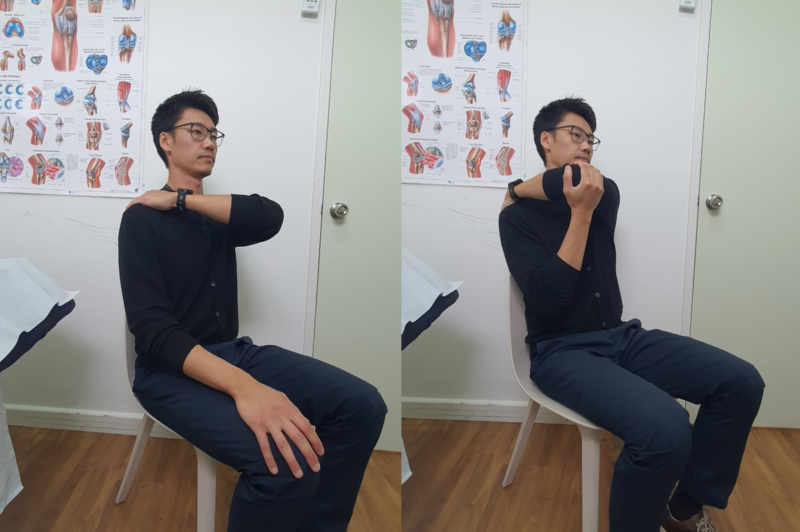Have you noticed that you, or your elderly Mum or Dad, are finding it harder to reach for things in the overhead cupboards, or are needing more help perhaps with overhead activities like hanging the washing out or getting that favourite coat off the coat hanger?
It’s because as we age, we start to slowly lose the ability to move through the full range of motion in our joints. By the age of 70, we can lose up to 25-30% of overall flexibility in our body.
Looking at the research, it has been shown that shoulder flexion (lifting arms straight up) in 70-year old can be reduced by up to 15% when compared with 20–30-year olds.
Another study looked at the relationship between shoulder abduction (lifting arms up and out to the side) and age. The study demonstrated that, on average, subjects who were over 65 years of age had 30 degrees less movement than their younger subjects. Furthermore, about half the subjects fell under the accepted threshold of 120 degrees of shoulder abduction for adequate day-to-day function.
BUT, don’t be too alarmed!
The study went on to discuss that age wasn’t the only factor in determining loss of movement but how much activity we engage in. This suggests that maintained or increased use can help offset some of the age-related loss of range of motion in the shoulders.
So, what actually happens in our joints when we start losing flexibility?
Although there are several causes, essentially the soft tissues that hold our joints together (ie. ligaments, tendons etc) increase in rigidity and decrease in elasticity. This leads to stiffness and increased resistance in the joint space.
Now to the GOOD news!
Multiple studies illustrate these changes can be dramatically slowed down with the right physical activity and an ongoing exercise regime.
It’s important to have an assessment with your health professional to determine what activity or exercise is best suited to your problem.
Your physiotherapist is one of the best health professionals who can help you with this so seek their advice and take control of your health.
In the meantime, here are 5 examples of exercises that can help with upper limb flexibility.
1. Upper Back Stretch:
Much of your shoulder movement is dependent on how well you bend through your upper back, especially backwards.
- Sit on a chair with a low backrest and sit back into the chair
- Have your arms crossed over your chest and slowly bend backwards over the backrest until you feel a gentle stretch in the middle back
- Hold for 10 sec and release the stretch (repeat 3x)

2. Chest Stretch
- Sit comfortably in your chair.
- Raise arms and place hands behind your head and bring your neck and shoulder back.
- Hold for 10 sec and release the stretch (repeat 3x)

3. Hand Behind Back Stretch
- Stand with a chair behind you. Interlace your hand behind your back
- Gently slide the hands up your back until you feel a gentle stretch in the shoulders
- Hold for 10 sec and release the stretch (repeat 3x)

4. Shoulder Stretch
- Sit comfortably in your chair
- Bring your left hand up onto your right shoulder. Support your elbow with your right hand
- Gently pull left elbow towards right shoulder until you can feel a gentle stretch
- Hold for 10 sec and release the stretch (repeat 3x)

5. Reaching Stretch
- Sit comfortably in your chair and interlace your hands on your lap.
- Raise your arms overhead as high as you can and slowly return to starting position.
- Repeat 10x.

If you are interested in improving your upper limb flexibility, please contact our friendly team here at The Physio Co. We would love to help you on your health and fitness journey.
(Article written by Tony Kim, TPC physio)

 1300 797 793
1300 797 793